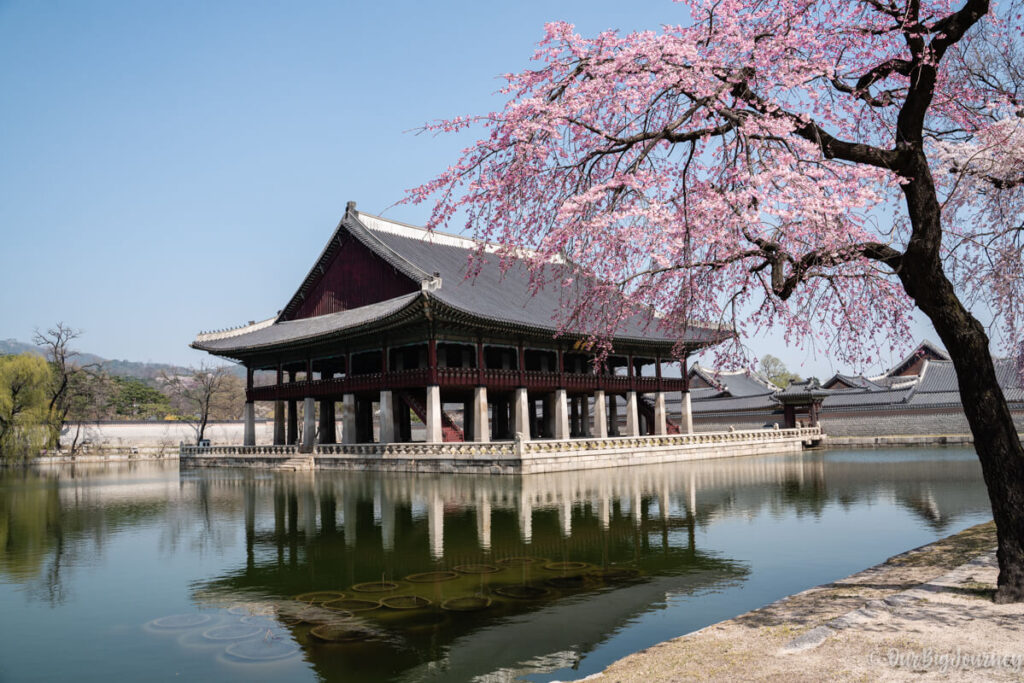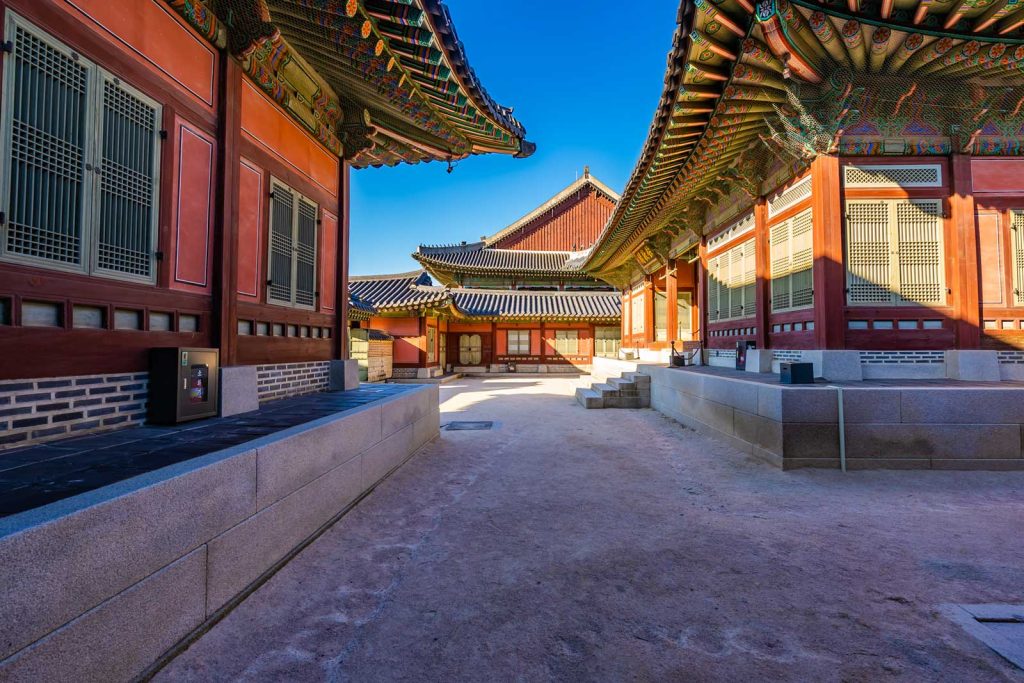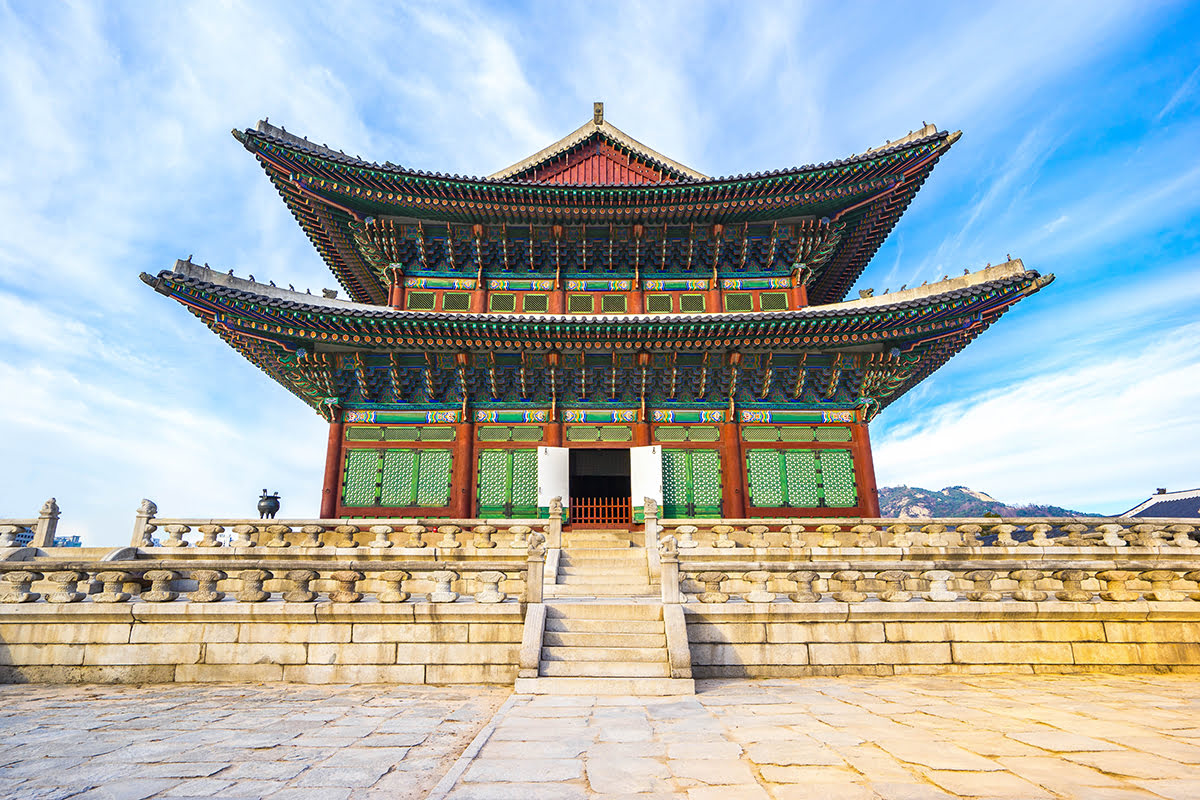My wife and I recently went on a trip to Seoul, South Korea, with Gyeongbokgung Palace as one of our bucket list destinations. We admire architectural marvels like this, making this wanderful palace a charming exploration for us.
Gyeongbokgung Palace stands majestically in Seoul’s upscale Gangnam District, symbolizing Korea’s rich cultural heritage, steep history, and grand rituals of regal kings and queens. Located at 20-13 Naksan-ro, Gyeongmunhwakseom in Jongno-gu Daehan-gun, Seoul, this UNESCO World Heritage site captivated us with its timeless beauty.
Our first encounter was at the main gate called Donnaegi (Gate of Harmony) or Gwanghwamun. It features an ancient stone slab depicting a ceremony by King Taejo, marking his reign in 1392. Seeing the massive wooden door and observing women carrying infants through our guide’s side entrance evoked scenes from Korea’s royal past.Walking within Gyeongbokgung Palace felt like stepping on sacred ground, resonating with the wisdom of kings who once ruled these halls.

One of our highlight experiences was observing a cultural performance by Geommu (Hapkido sword dance). The synchronized movements between dancers and martial artists were mesmerizing to watch. We could almost feel transported back in time when we learned about their skills that once protected the royal family, now just for entertainment purposes only – a testament to Korea’s proud past preserved as part of its national culture today!
In Gyeongbokgung Palace lies Jilin-go (Inner Court), which housed living quarters and courtiers. As we toured the royal apartments, it was fascinating to learn about their daily life – from morning routines such as bathing in rice bran oil fryings or eating traditional Korean breakfasts like Tteokbokki (sticky rice cakes) that were surprisingly tasty despite being a common street food here.
Another must-visit location within the palace is Gyeongnain Hall, where kings and queens once lived. Beautiful chrysanthemum plants bloomed in its courtyard during spring when we visited. We enjoyed an amazing feast of Korean BBQ on-site. The meal included beef bulgogi, grilled short ribs, and kimchi, all washed down with refreshing soju. Our guide explained the etiquette for Korean BBQ. Sharing with friends or family is common, but as visitors, we were advised not to bring our own food. Regulations ensure these culinary experiences remain exclusive for guests at places like Gyeongbokgung Palace.
No trip would be complete without experiencing traditional Korean tea ceremonies. Here in the palace, our guide introduced us to this ancient ritual. He emphasized the tradition of removing shoes as a sign of respect when entering indoor areas of palaces or temples across Korea. We learned that serving green tea is customary at such events. However, not everyone drinks it regularly in modern Korean society. They also serve black tea to accommodate visitors from overseas like us!
As we said goodbye to Gyeongbokgung Palace, we reflected on our enriching journey through time and tradition. This trip will always stay with us. My wife remarked how fortunate the world is to see such well-preserved cultural heritage sites. We both recognized that we are custodians of this knowledge today. Past generations honored their ancestors’ legacies to create a better future. This tradition is still upheld in Korea today.
Our journey into Gyeongbokgung Palace taught us much about Korean culture and the importance of preserving historical sites. This allows future generations to learn from the past. As we left Seoul and waved goodbye, I felt a deep respect for this magnificent palace. It represents centuries-old tradition that continues to shape modern Korea’s identity.
If you plan on visiting Gyeongbokgung Palace, always prepare adequately beforehand. Ensure your passport is valid and up-to-date. Consider purchasing a tourist visa if required for extended stays in South Korea. Pre-book an entrance ticket online as they can get quite busy during peak seasons. Plan ahead!
And lastly – always remember to dress appropriately while visiting such sites, respect the traditions and etiquette observed by locals here. It shows respect for their culture, treasured through generations. This experience, I assure you, will be remarkable!

In conclusion, Gyeongbokgung Palace offers visitors like my wife and me unforgettable experiences and deep cultural insights into the majestic Joseon Dynasty. This journey through time led us on an incredible adventure that has left a profound impact upon our souls – forging memories we’ll carry forever!
Traveling lets us embrace different cultures, broadening our horizons and fostering empathy globally. Leaving Gyeongbokgung Palace, we gained deeper respect for Korean culture and cherished our heritage even more. It was a transformative journey we feel privileged to have experienced!

